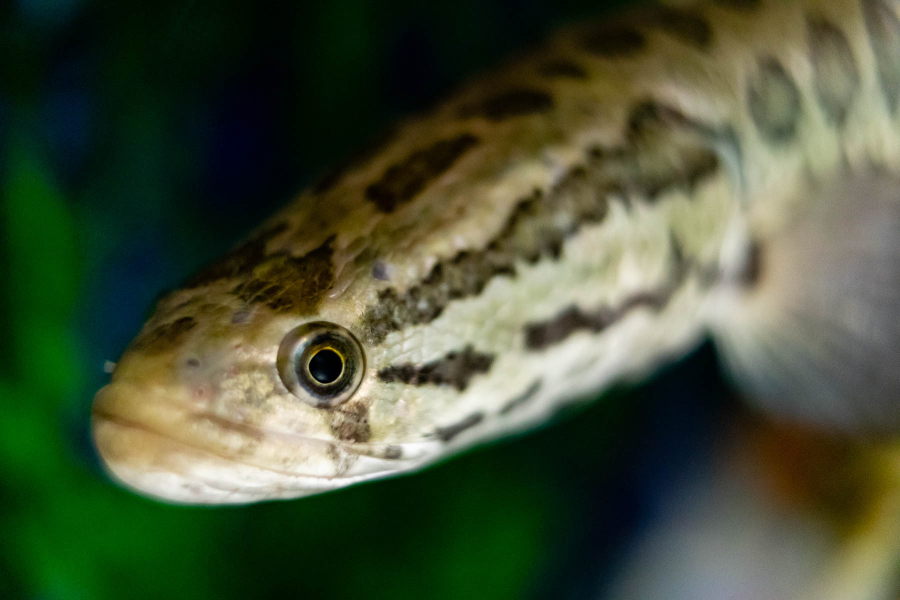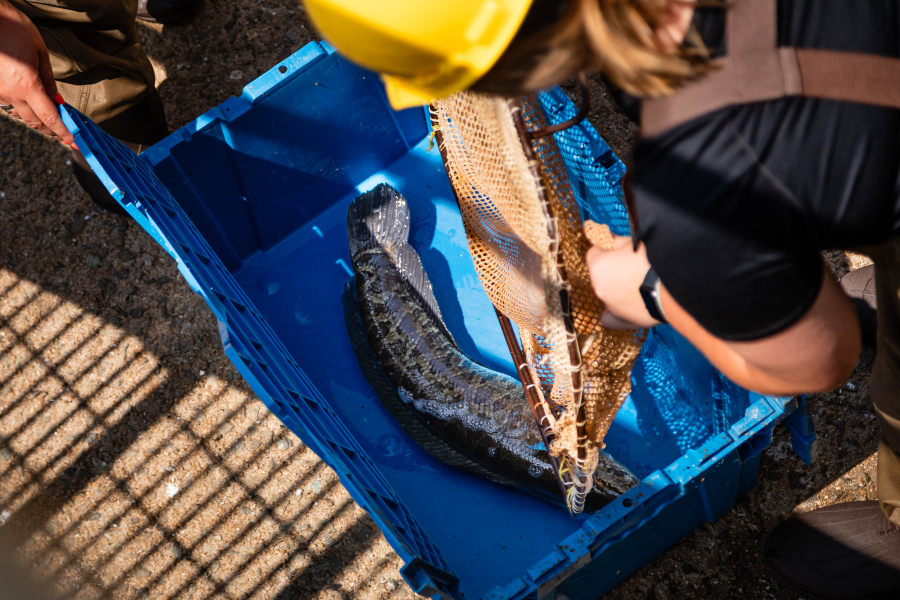Local government leaders fish for invasive species management strategies in the Bay
Blue catfish, snakeheads and more discussed at quarterly Local Government Advisory Committee meeting

From the onslaught of “murder hornets” in 2020, to the spread of spotted lanternflies in 2022 and the Burmese python invasion in 2023, invasive species have quickly established themselves as a critical environmental threat nationwide. Unfortunately, the Chesapeake Bay is experiencing similar challenges, and on June 1-2, 2023, the Chesapeake Bay Program’s Local Government Advisory Committee (LGAC) met in Havre de Grace, Maryland, to discuss invasive species and living resources in the watershed.
LGAC is a group of local elected officials from across the Bay watershed whose mission is to share the views and insights of local leaders with state and federal decision-makers to enhance the flow of information about the health and restoration of the Chesapeake Bay watershed. The committee meets quarterly, traveling around the Bay region to address different state or local priorities.
On June 1st, Jim Thompson, a fisheries biologist at the Maryland Department of Natural Resources (DNR), briefed LGAC on the perilous surge of aquatic invasive species in recent years. Thompson shared that of the over 120 species of fish and shellfish within the Chesapeake Bay, 18% are considered nuisance species that cause ecological and economic damage to the watershed. The worst aquatic invasive species in the Bay include the blue catfish, flathead catfish and the northern snakehead.
Boat electrofishing surveys conducted by DNR showed a 90% increase in the abundance of northern snakeheads in the Susquehanna Flats from 2015-2019, a 250% increase in the Patuxent River from 2012-2019, and a 337.5% increase in the Potomac River from 2007-2019. Invasive species like the northern snakehead and blue catfish can lead to ecological disaster, as their voracious appetites and indiscriminating diets appear to drive alarming declines in native species in waterways where they have become established.
In addition to their direct ecological and economic impacts, rising numbers of aquatic invasive species have also impaired fish passage in the watershed. Many native fish species in the Bay, such as American shad, hickory shad and river herring, are migratory fish that primarily live in the ocean but travel to freshwater bodies to reproduce. Unfortunately, migratory fish species like the American shad have been in perilous decline since the 1970s. A major component of this decline has been from the construction of dams and other blockages along waterways that prevent fish from migrating upstream to traditional spawning sites. To help facilitate fish passage, many dams have constructed fish lifts to transport native species over the dam and release them upstream.

On June 2nd, LGAC visited the Conowingo Dam in Conowingo, Maryland to see their famed fish lifts. While touring the facility, Plant Manager Amir Hammad and Senior Manager Andrea Danucalov explained that the dam had to halt operation of the east fish lift for the 2021 spawning season to help limit the spread of invasive catfish and northern snakeheads. As a result, only 485 American shad made it over the dam that year, a record low since the lift was installed in 1991.
The east fish lift has since been reopened, and a “trap and transport” program has been implemented at the west fish lift to reduce unwanted invasives from hitching a ride over the dam. The “trap and transport” program requires fish captured in the fish lift to be deposited into a sorting tank where fishery biologists manually sort the fish, netting and removing invasives to be used for research or donated to food banks. While this program acts as a provisional solution to mitigate the spread of invasive aquatic species, this method is not foolproof and requires substantially more labor and resources to execute. Biologists will likely need to develop a more sustainable fish passage plan to abate the spread of invasive species while facilitating fish migration for the future.
For local governments armed with limited resources, tackling invasive species can be a particularly difficult task. Victoria Spice, an agricultural inspector specializing in plant protection and weed management at the Maryland Department of Agriculture, shared how the Lower Eastern Shore – Partnership for Regional Invasive Species Management (LES-PRISM) provides an affordable and accessible approach to invasive species management.
Prior to the LES-PRISM, each county in Maryland had a weed control program but there was no broader regional management program for invasive species. With LES-PRISM, stakeholders from the state, county, federal and non-profit level work together to eradicate invasive species within the lower four counties of Maryland’s Eastern Shore. This regional cooperative for invasive species management allows counties to work as one—sharing training and outreach materials, leveraging funding and workforce resources, improving eligibility for grant opportunities and ultimately implementing more effective and less costly invasive species management.
“From the expert insights offered by presenters, it is clear that invasive species pose a threat to the Chesapeake Bay,” said Daniel Chao, chair of the Local Government Advisory Committee. “But with the excellent cooperative management strategies demonstrated, I am optimistic local governments will do their part in supporting these efforts as they benefit communities as well as the greater watershed.”

Comments
There are no comments.
Thank you!
Your comment has been received. Before it can be published, the comment will be reviewed by our team to ensure it adheres with our rules of engagement.
Back to recent stories